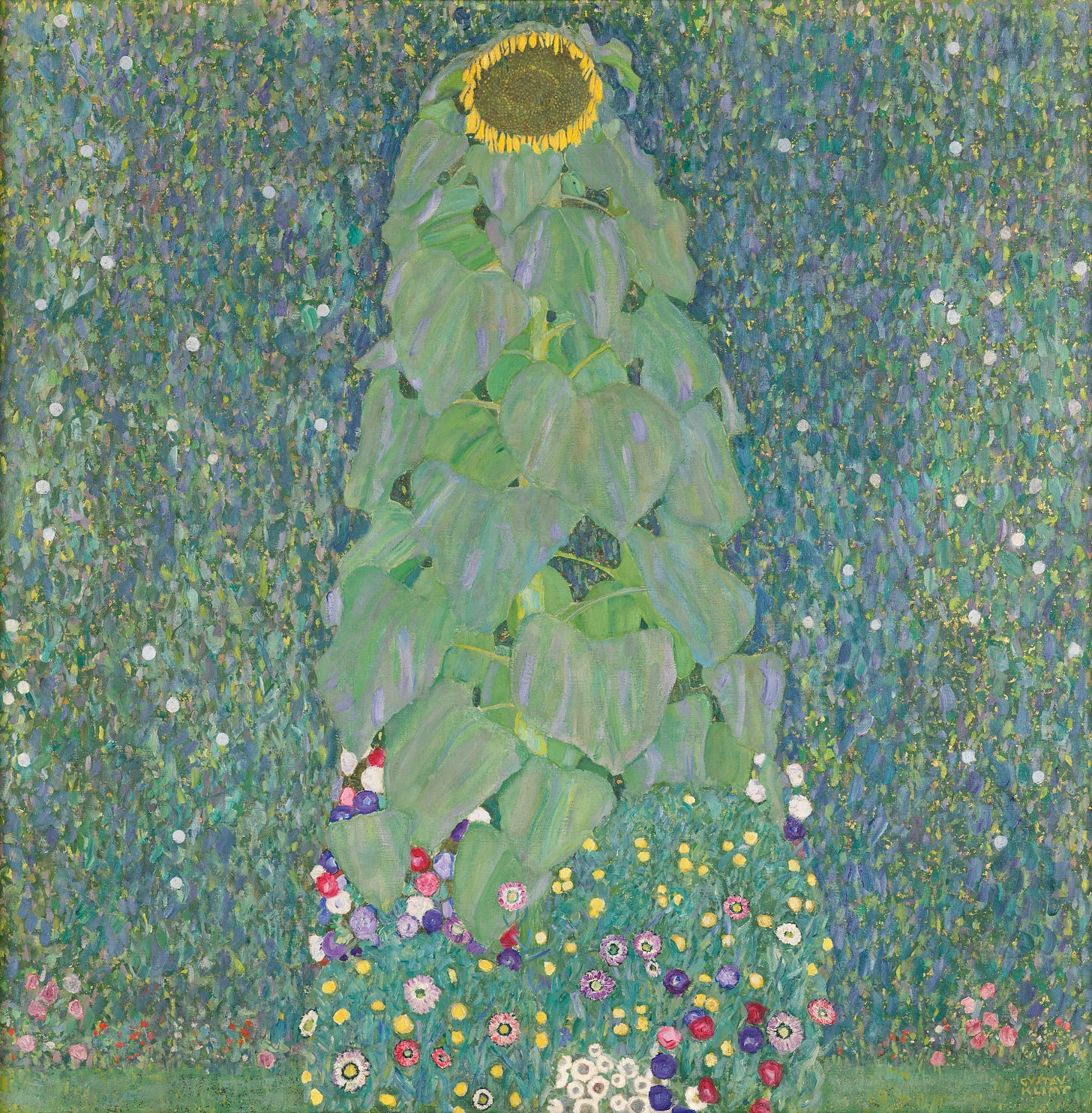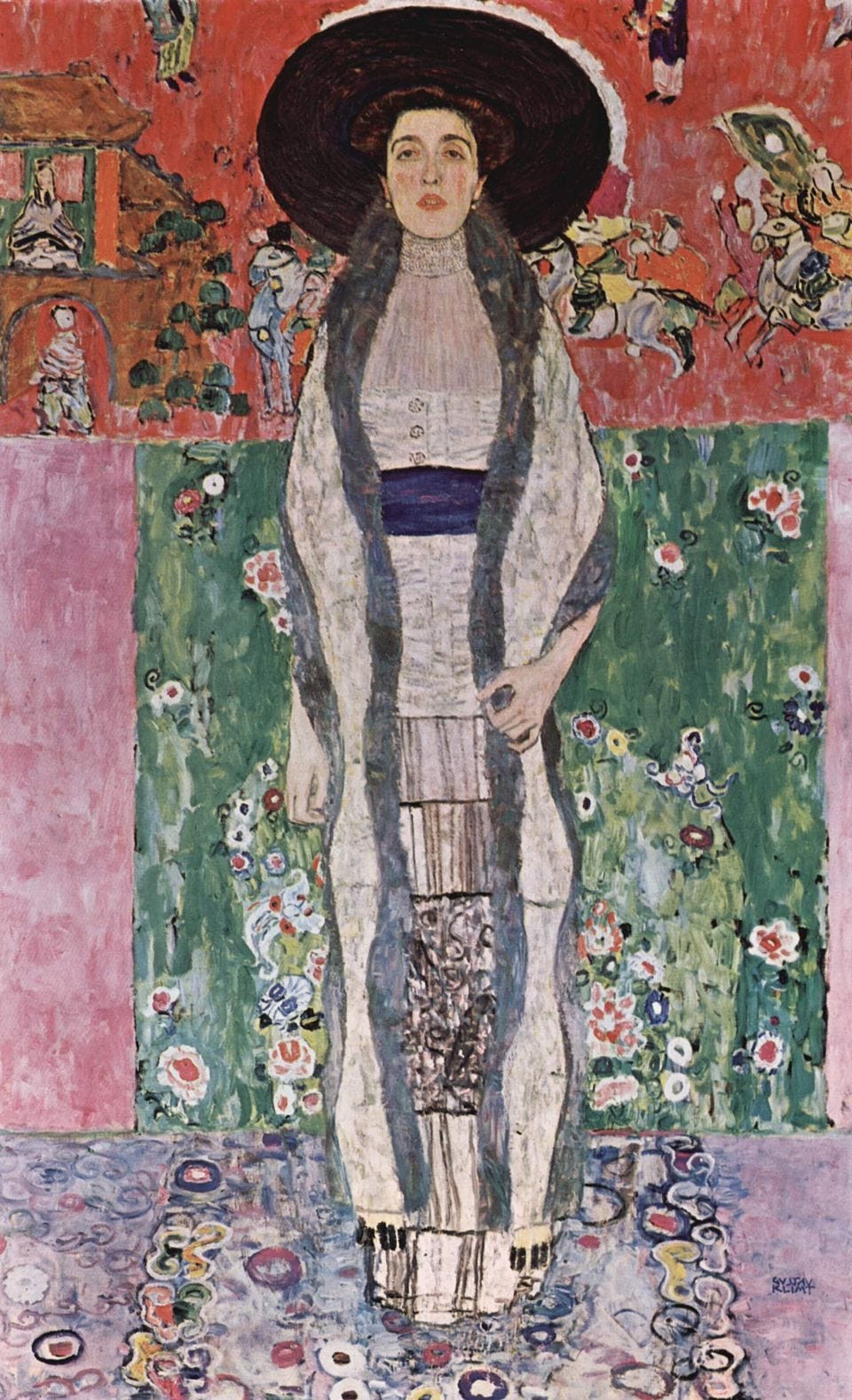Gustav Klimt's Sunflowers
Gustav Klimt is best known for his sumptuous portraits of Vienna's bourgeoisie. However, his contributions to floral painting shouldn't be overlooked.
This essay is part of the series Flowers in Art. To read future essays in this series and gain access to the full archive, become a paid subscriber today:

One tall sunflower stands against a hedge. Its head looks down at its cascade of leaves, which end in a flurry of delicate wildflowers along its roots.
One would be forgiven, standing far enough away (or in my case, without glasses), for thinking it was a woman—glancing bashfully at her scalloped gown and richly-embroidered hem. Gustav Klimt painted many beautiful outdoor scenes toward the end of his life, including an earlier image featuring several sunflowers (Farm Garden with Sunflowers, below). But what makes his Sunflower (1907-1908) unique is its composition. It is a layout typically reserved for his beloved portraits of Vienna’s bourgeois women in their resplendent gowns.
In his later years, Klimt moved away from the use of gold leaf that we associate with his most famous paintings, including The Kiss (1907-1908) and Portrait of Adele Bloch-Bauer I (1907). Though painted in the same year, Sunflower offers us a preview of what those post-Golden Phase works would be like: the absence of gold leaf, greater interest in nature, and a looser style of painting. Compare his first Portrait of Adele to his second (below), and the contrast is stark.

From the year 1900 to 1916, Klimt spent his summers in Attersee, a picturesque lake in Upper Austria that became a popular holiday destination at the turn of the century. The artist would begin his works en plein air and often finish them later in his studio in Vienna. These works, as art critic Eva di Stefano notes, “effect a sort of indefinite suspension of time.”1 There are no people or signs of animal life, and the compositions often include expansive backgrounds or foregrounds that swallow the canvas.



